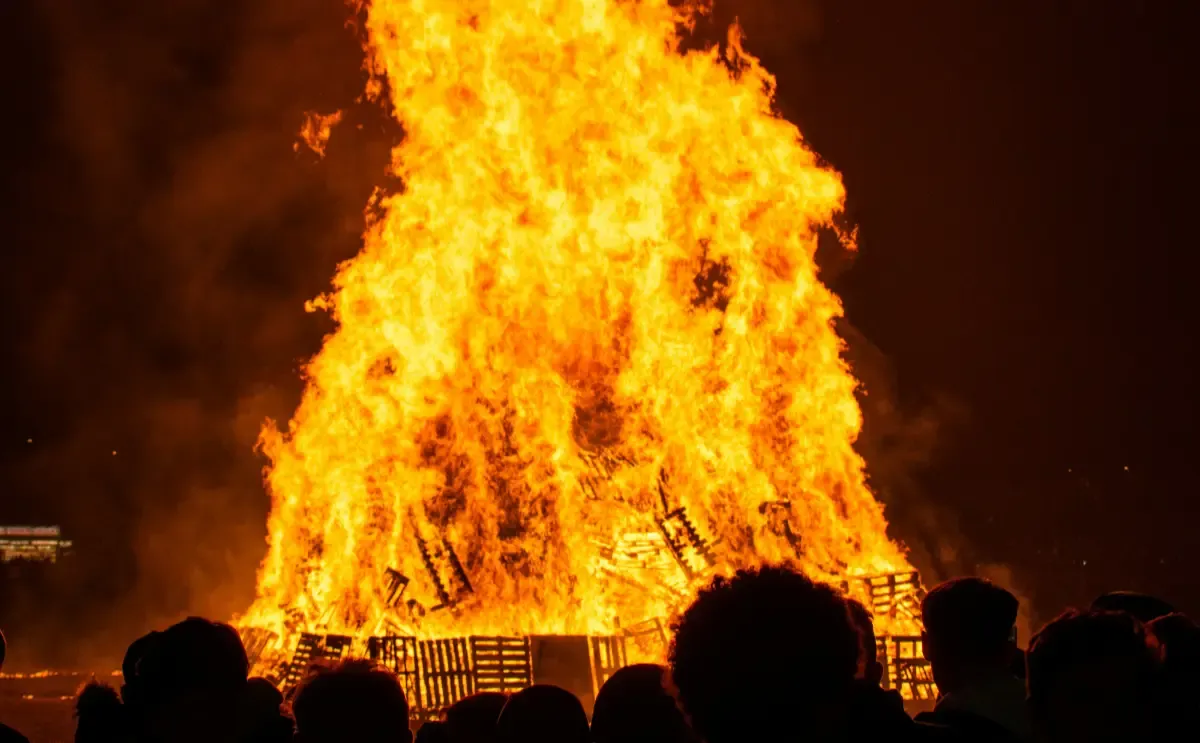Guy Fawkes Night: Tyre Raids, Bonfire Battles and the Worst Guy Ever

Before health and safety, before helicopter parenting, there was Guy Fawkes Night in 1960s Swansea.
If Christmas was for families and Easter was for church, then Guy Fawkes Night was for absolute, unrepentant mayhem. It wasn't just about fireworks — it was warfare. A turf war waged with stolen tyres and matches, a weeks-long campaign to out-burn, out-steal, and outwit the neighbouring gangs in the sacred quest to build the biggest bonfire in Port Tennant.
We were feral. And we were proud of it.
Operation Bonfire
Preparation began weeks in advance. Every kid in the neighbourhood either joined forces or splintered into factions, all united in the hunt for flammable treasure: old furniture, scrap wood, pallets, cardboard, and the crown jewels — bus and tractor tyres. These prizes would be spirited away to various "secure" locations: garages, sheds, the underground shelter over the Bank.
Of course, everyone knew where everyone else was stashing their hoard. Bonfire espionage was a constant threat.
But it wasn't just about gathering. It was about sabotage.
If you discovered a rival gang's stash, you faced a delicious choice: steal what you could carry, or burn the rest on the spot, preferably with theatrical flair. Revenge was swift and merciless. Our store would be hit, we'd retaliate, and inevitably the fire brigade would get dragged into the smoldering aftermath.
I'm surprised none of them ever wrote a book about us.
A Lesson in Engineering (and Petty Theft)
Once the big day arrived, things got technical.
We needed oil for the bonfire — proper accelerant — and we knew exactly where to get it: from the coal wagons parked down on the railway line. Our method was ingeniously crude: a rolled-up strip of paper and a tin can. We'd poke the paper into the filler hole on the wheel hub, wait for the oil to soak through, then let it drip into the can like some medieval alchemist extracting liquid gold.
This precious fuel would then be ceremoniously poured onto our bonfire just before lighting.
Looking back, it's a miracle none of us set ourselves ablaze — and an even bigger miracle that we never ended up as railway casualties. But such was childhood in the 1950s and early 1960s: risky, unsupervised, and perpetually one match away from disaster.
The World's Worst Guy
No bonfire was complete without its Guy — a rag-stuffed effigy of Mr. Fawkes himself, destined for the flames.
One year, in a stroke of either genius or desperation, we decided to use my little brother David as a living Guy. We dressed him in old clothes, positioned him on the pavement, and began approaching passers-by with our plaintive cry: "Penny for the Guy!"
The plan was simple: David would sit perfectly still, playing dead, while we collected donations.
David was a catastrophic Guy. He fidgeted constantly, scratched himself, adjusted his collar, and looked undeniably, unmistakably alive. His performance wouldn't have fooled a blind person. Naturally, nobody gave us a penny. One woman even muttered something about child cruelty as she hurried past.
David would have been about two or three at the time — which, in hindsight, probably explains why he made such a terrible corpse.